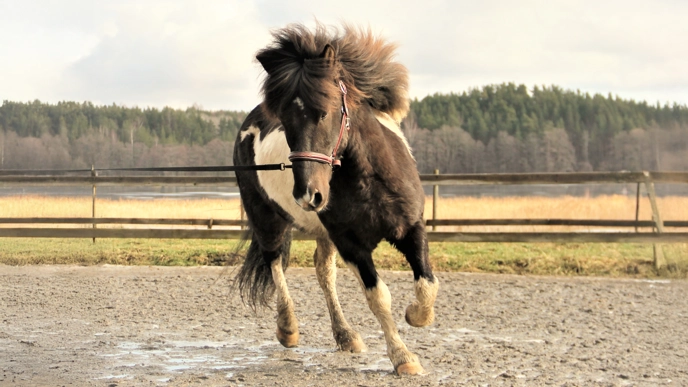
Improved lameness diagnostics during lunging
KEY POINTS- Lunging is often used in lameness investigations.
- The curved track can facilitate the observation of lameness but also gives rise to complex movement patterns that may lead to misinterpretations.
- The aim of this project is to establish a stronger scientific foundation for objective motion analysis during lunging.
Project overview
Participants
More related research
Short summary
Background
In addition to straight-line evaluation, horses are often assessed on the lunge during lameness examinations. Lunging the horse is also a prevalent method for owners to perform a quick lameness check at home. The circular track induces changes in movement, limb angles, and load, which can increase lameness visibility. However, given the well-documented limitations of visual assessment, the risk of misinterpretation is significant. Utilizing objective gait analysis could help bridge this diagnostic performance gap, but it is crucial to understand how to accurately interpret the objective gait analysis data collected during lunging. Compensatory patterns have been well described for straight-line evaluations.
About this project
In a population of 150 horses with an objectively confirmed positive response to diagnostic analgesia, we will investigate compensatory patterns on the lunge and whether withers movement is useful to differentiate between a compensatory head nod and a true forelimb lameness. Using medical record data we aim to explore if the lameness severity differs with the affected limb on the inside or outside of the circle for different diagnoses/pain locations, a possible adjunct method for localising pain and decreasing the number of blocks needed to arrive at conclusion. We also propose a detailed investigation into which biomechanical parameters that best describe and distinguish lameness on the circle. Finally, we like to in-depth study the outside forelimb lameness often recognised in Icelandic horses.
Objective
In this project, our objective is to establish evidence-based guidelines for interpreting objective gait analysis data of horses on the lunge.
Increased knowledge of the complex compensatory movements seen and dissemination of this knowledge to owners and trainers will improve early lameness detection. By transferring the knowledge from this project to equine veterinarians, the orthopaedic diagnostics can be immediately improved. This will have a knock-on effect on treatment and rehabilitation success that will improve equine welfare.
Collaborations
In this project we are collaborating with NMBU in Norway, Utrecht University in the Netherlands, Tierklinik Lusche in Germany and of course UDS Hästkliniken. In the sub-projects on Icelandic horses' movement on volts in lameness, we collaborate with clinics at Mälaren Hästklinik and a number of private veterinarians.